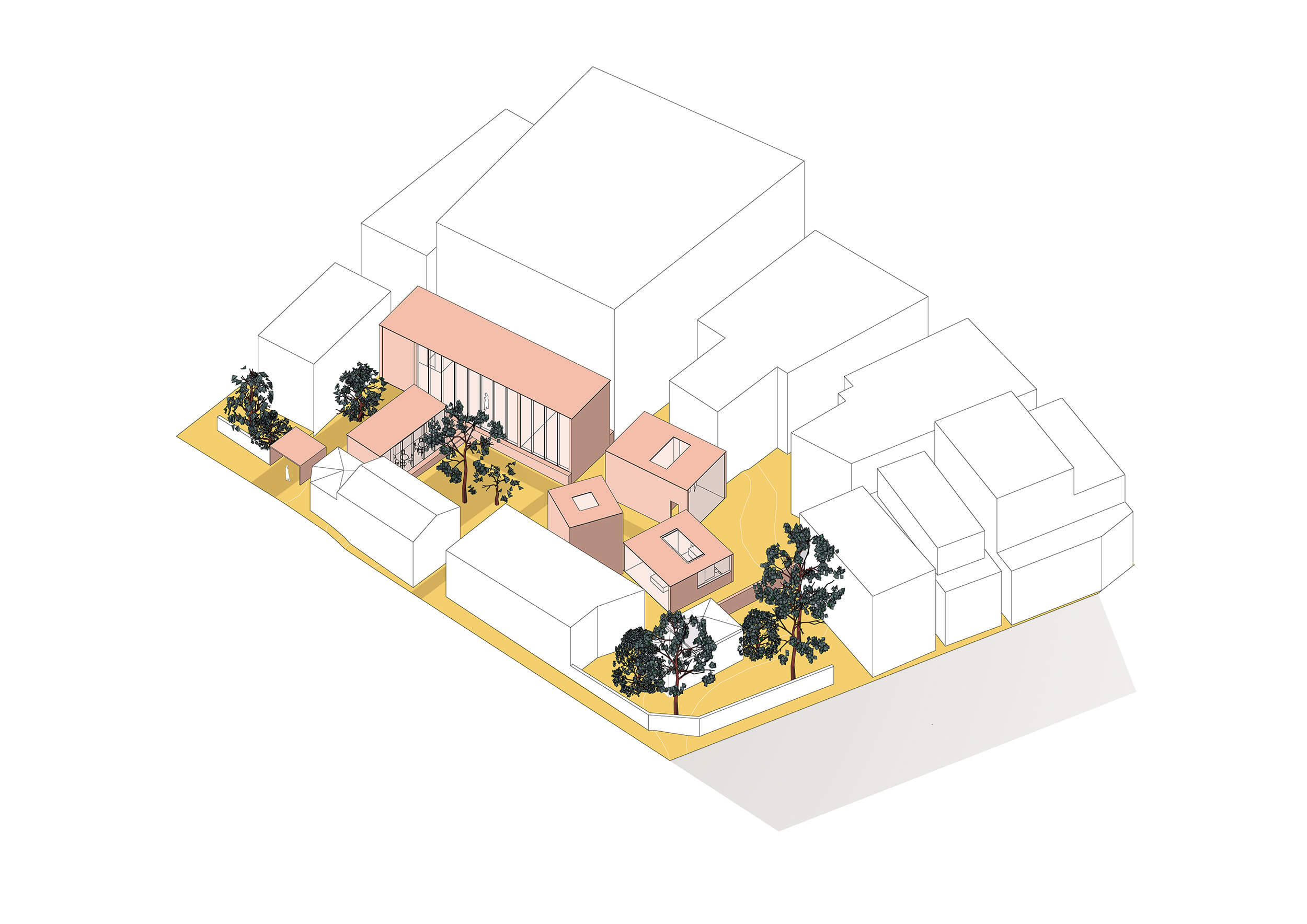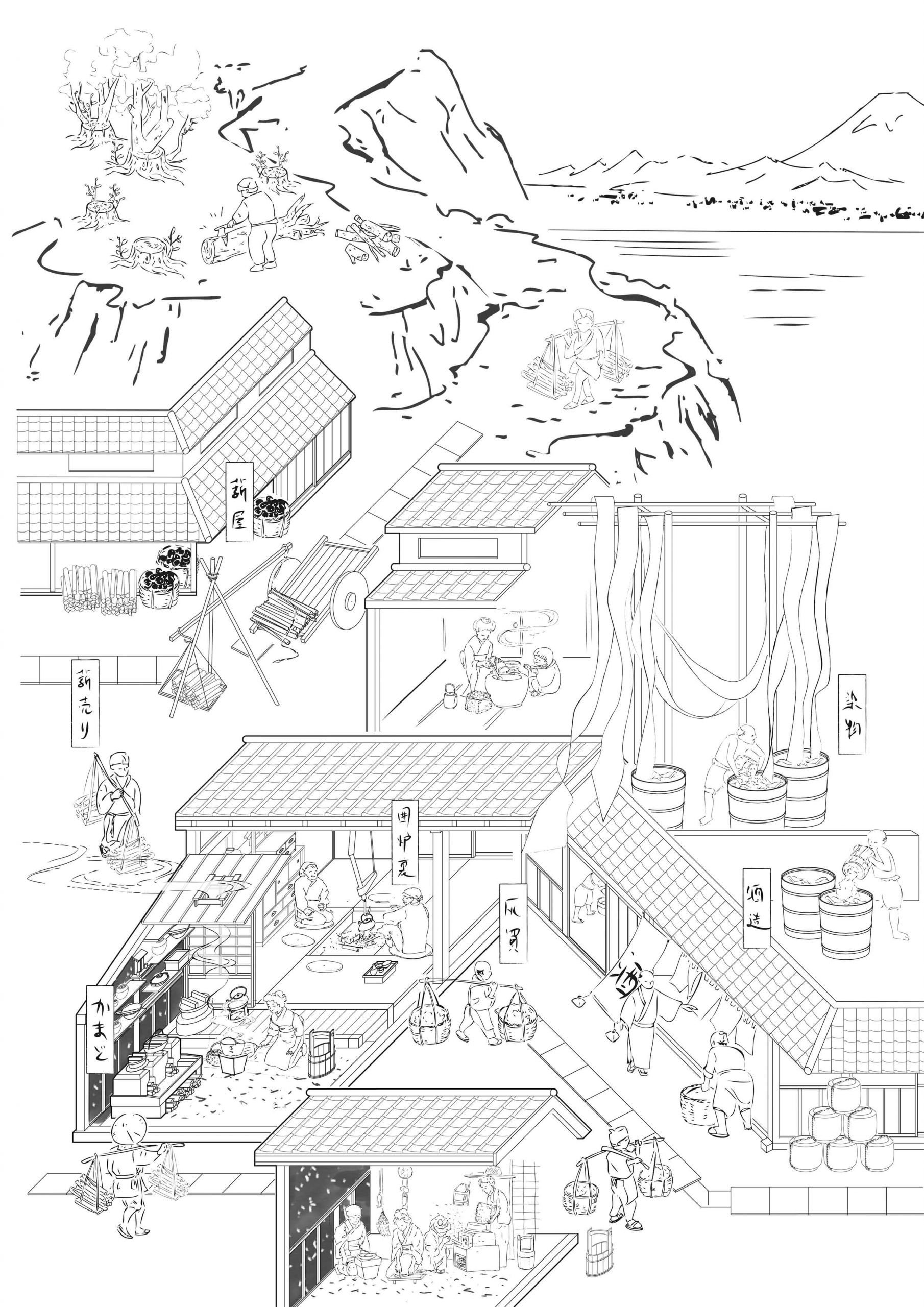THE NIGHT SPENT WITH ART
The project is a proposal for an art complex containing an exhibition hall, a visiting artist residence, a café, a sculpture park and three art accomodation units. The site is a parking lot located in a busy area of Jiyugaoka, fac- ing one of the main shopping streets. The part facing the main road is occupied by an old tra- ditional wooden japanese house accompanied by big old trees which are `hiding` the inner part of the site where accomodations are lo- cated and create a quiet lagoon in the middle of this busy district.
The main concept of the proposal is to high- light the cultural history of Jiyugaoka and al- low visitors to experience art from a different perspective, that is to say the opportunity to spend the night together with art.
The artist residence connected to the exhibi- tion hall provides a special experience where the artist can be seen working at the time of ongoing exhibition.
During the day, the accomodations are open to the public as part of the sculpture park. During the night the units, designed to have their own private `gardens` transforms from
exhibition units to accomodating ones.
This transformation was one of the main focus points during the design process of the pro- posal.
The location of the site, disposition of the units on site in a sequence gradually opening up and the fact of unexpected usage of these units re- flects the head theme of unpredictability.
Student: Ezgi Nalci
Stove
As a once archetypal household element, the stove has gradually become invisible in contemporary housing, with open-flame cooking disappearing into glasstop IH stoves and heating being concealed in the floors. Simultaneously the energy supply system has grown into an extensive and cohesive global network, at once distant and thus invisible to its end users yet heavily transforming the hinterland. Until the end of the nineteenth century the network was tangible and concrete: firewood was acquired from the forest, purchased by each household and used for the stove, and afterward the ash produced was re-collected by ash-traders for other uses such as sake brewing. From around 1960 Japan increasingly imported liquefied natural gas via tanker ships as an alternative energy supply, requiring a complicated gas-supply infrastructure, along with urban renewal, including shipyards, pipelines, gasometers, etc. Today the power system is a hybrid one, fed from multiple resources, including atomic power and renewable energy, making the network evermore extensive and abstruse.
Glass
Glass is a transparent material in terms of light and sight, sometimes also for sound or temperature, yet at the same time is opaque in terms of smells or the movement of persons or things. In separating different environments, it simultaneously links them; it allows interactions, yet no physical contact. These distinctive features appear to allow certain forms of human interplays to unfold that otherwise would be impossible. This is particularly true in the case of private encounters, where gestures and gazes can be exchanged through the glass; where a forbidden closeness is possible, albeit devoid of all transgression; or where even, through the reflection of the glass, silent observation is possible.

